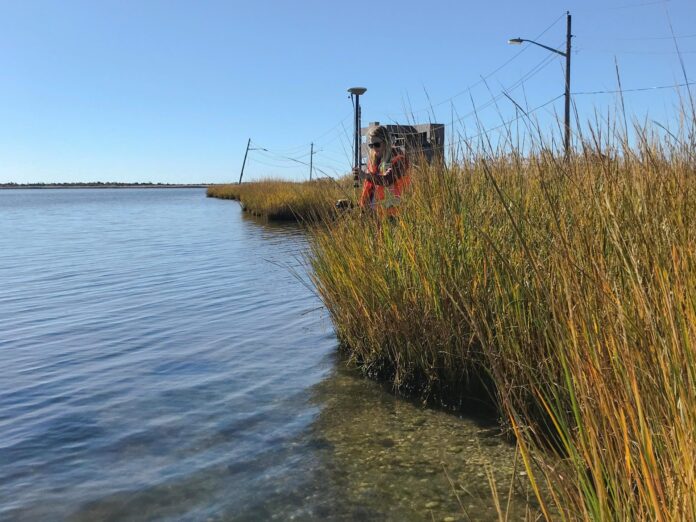The United States National Academies of Sciences, Engineering, and Medicine has been producing reports since 2018 on climate change and rising sea levels and their impact on coastal communities. The latest is focused on America’s Gulf Coast which includes the states of Florida, Alabama, Mississippi, Louisiana, and Texas. Climate-related disaster events in these states have been happening at a rate twice as great as occurrences before 1980. The Total human death toll from 1980 to 2022 reached nearly 11,000. Each disaster cost on average, a billion dollars.
To reduce such impacts the U.S. is looking at whether to rebuild in place, shore up coastal defences, or relocate communities, assets and people to take them out of harm’s way in what is being called a “managed retreat.”
Where are the Plans?
When it comes to disaster planning, the U.S. government is a laggard at almost every level. Little attention is paid to prevention, pre-disaster planning and adaptation. The issue of retreating from the country’s coastlines is seen by many as a defeat rather than as a responsible act of self-preservation.
The Gulf of Mexico shoreline, despite increasing environmental threats, has witnessed a population increase over the last 50 years. The coastline is increasingly being gentrified. Property values have steadily risen. High-rise condominium construction in many communities is replacing low-rise businesses and housing.
The Gulf coastline features older communities with history and established relationships with the flora and fauna of the area. The accumulated knowledge and expertise of locals and their understanding of the Gulf and its characteristics are being lost when these communities get uprooted. The demographic of these communities is not high-income. Much of the population lacks access to significant financial resources if faced with climate disasters. Also, these populations are inclined to be more culturally attached to their locations making it harder to convince them of the need to retreat.
Relocating and resettling involves more than the physical act of moving. It requires planning, cooperation, problem-solving, and coordination. In some cases, towns that get uprooted will become part of an existing community, or they may situate themselves where no town currently exists. Either way, infrastructure and institutional capacity will be needed to ensure essential services such as housing, water treatment and water supply, power and fuel distribution, broadband, education, health services, employment, and transportation are either in place or will be created. To date, in the United States and in many other countries where rising sea levels will negatively impact coastal communities, there is neither planning nor funding for population relocation.
In 2022, the White House launched a Subcommittee of its National Climate Task Force involving FEMA and the Department of the Interior to support moving Americans away from high-risk regions. Funding for voluntary relocation amounting to $111 million was made available to 11 indigenous communities impacted by wildfire and drought, and Alaskan coastal communities inundated by Pacific extreme weather events. This could be the model for future relocation programs, or a one-off.
The Gulf of Mexico Isn’t the Only Coastline in Trouble
Back in 2018, I wrote about how two coastal communities in the U.S. were coping with ocean inundation. Norfolk, Virginia was one. The other was Del Mar, California.
Norfolk’s plans involved abandoning areas that would flood as sea levels rise and fortifying other areas requiring new construction to be elevated one metre above a 100-year flood line. Norfolk is a good example of towns and cities along the Atlantic Ocean seaboard where it is expected to see rising sea levels displace millions by century’s end causing social disruption and negative economic consequences amounting to hundreds of billions of dollars.
Del Mar has a plan to manage its retreat from the Pacific ahead of rising seas beginning with 600 homes within a few years, all in danger of vanishing into the Pacific. The city’s retreat includes eliminating seawalls, roads, and other infrastructure using a risk model to help make choices. A buy-back program and other forms of financial are being put in place.
Del Mar is a fairly wealthy community, but coastal towns by the Gulf of Mexico are anything but, particularly many in Louisiana. There, funding for buy-back programs will likely exceed the capacity of the communities being affected. Even state and federal government assistance may be insufficient to cover the loss of property and relocation costs. Then add in mental health costs from uprooting people from places where they have lived for centuries. Medical resources will have to be beefed up to deal with the fallout.










[…] of this meltwater contributes to the rise of sea levels around the world. The Southeastern United States from Tidewater Virginia to the Texas coastline on the Gulf of Mexico bears evidence of how much the […]
[…] success of this experiment may prove a timely solution for American seaside communities like Norfolk, Virginia which is experiencing faster-than-average sea level rise. Norfolk has been building berms and […]